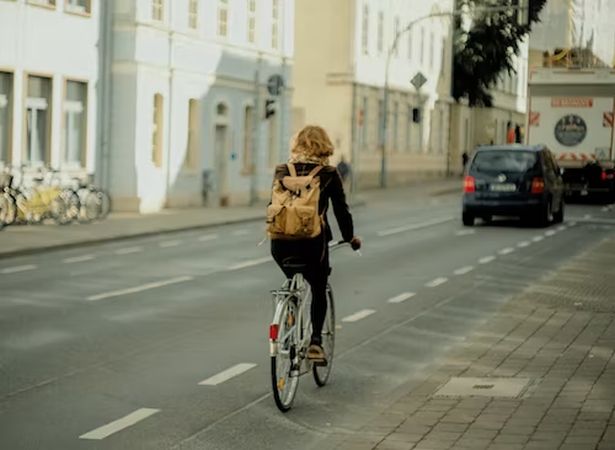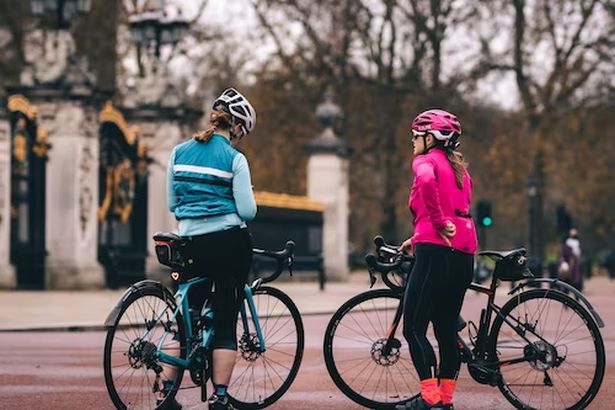6 Things To Be Careful About When Riding A Bike
Riding a bike is a fun and healthy way to get around, but it’s essential to be aware of the risks involved. Bicyclists are more vulnerable than drivers in motor vehicles due to their lack of protection from the elements and other road users. As such, some precautions should be taken when riding a bike. Here are six things you need to be careful about when riding your bicycle:

1) Obeying Traffic Laws
Traffic laws are designed to ensure the safety of everyone on the road, and failure to follow them can lead to serious consequences. According to personal injury lawyers, cyclists should obey all traffic laws when riding a bike, including stopping at red lights, yielding to pedestrians in crosswalks and obeying speed limits. Bicycles are vehicles, too and must follow the same road rules as cars, trucks and motorcycles.
Knowing these rules ahead of time is essential for staying safe while biking. It’s also wise to familiarize yourself with any additional bicycle-specific regulations in your area before hitting the roads. Most states have specific laws governing how bicyclists should behave on public streets; some require cyclists over a certain age (typically 12) to wear helmets, while others mandate that cyclists ride single file only.
2) Wearing Protective Gear
When riding a bike, wearing protective gear like a helmet, elbow and knee pads, and reflective clothing is important. The helmet should fit snugly but not too tight so it won’t slip off during an impact or fall. It should be equipped with straps that keep the chin guard securely in place and foam padding for extra protection against effects and falls. Elbow and knee pads provide additional protection from scrapes, bruises, cuts and even broken bones if you fall off your bike unexpectedly.

Reflective clothing helps increase visibility at night or in low-light conditions by reflecting light towards drivers of other vehicles on the road so they can see you more easily while driving past you. These items are designed to help protect you in an accident or collision with another vehicle.
3) Being Aware Of Your Surroundings
When riding a bicycle, you’re sharing the road with other vehicle drivers and pedestrians who may not be as aware of your presence as you are. It’s important to use caution while riding by being aware of what’s happening around you. Things like traffic patterns, potential hazards like potholes or road debris, and other cyclists and pedestrians should all be considered, even if you’re in a hurry.
Using your ears can help you detect the presence of vehicles that may not be visible due to blind spots. Listening for horns honking or engine revving can help you make a quick decision to avoid a collision. Additionally, using hand signals while making turns or stopping can alert both drivers and other cyclists of your intentions ahead of time, helping everyone stay safe.
4) Maintaining Your Bike
Regularly maintaining your bike is vital for keeping it in good condition and preventing it from breaking down or malfunctioning while riding. This includes checking the brakes, ensuring all nuts and bolts are secure and ensuring that your tires have enough air pressure. It’s also important to check for any wear or damage on the frame and components that could cause an accident if left unchecked. A properly maintained bike ensures a safe and comfortable ride every time you use it.
5) Riding at the Right Speed
Riding your bike too fast can lead to accidents as well as tickets from law enforcement officers. It’s crucial to find a comfortable and safe speed for you, considering things like terrain, traffic conditions, weather, and visibility. Riding too fast can increase the risk of injury due to accidents, and losing control of your bike while riding too slow can put you in danger by making you more visible to other vehicles on the road.
It’s essential that cyclists find a balance between going too fast and too slow when out on their bikes. The ideal speed will depend on various factors, such as the cyclist’s experience level, terrain type, weather conditions, and traffic volume. For instance, experienced riders may be able to handle higher speeds than novice ones in certain situations. Additionally, wet or icy roads require lower rates for safety reasons, as it takes longer for brakes and tires to respond in these conditions.
6) Communicating with Other Riders
Communication is vital when riding in a group, as it makes everyone aware of the intentions and movements of those around them. It’s essential to communicate your intentions to other cyclists before making any sudden changes or turns so that they can adjust accordingly. Additionally, verbal communication between riders should alert each other of potential hazards or dangers ahead. This helps keep everyone safe and ensures that no one is left behind.
By being mindful of these tips, cyclists can enjoy their rides while staying safe on the roads. Riding a bike can be a great way to stay active and enjoy the outdoors, but it’s essential to take precautions to ensure that everyone stays safe. So, keep these six tips in mind when riding your bicycle.
